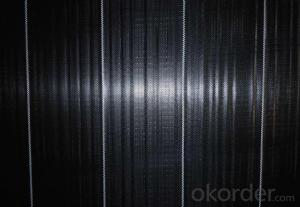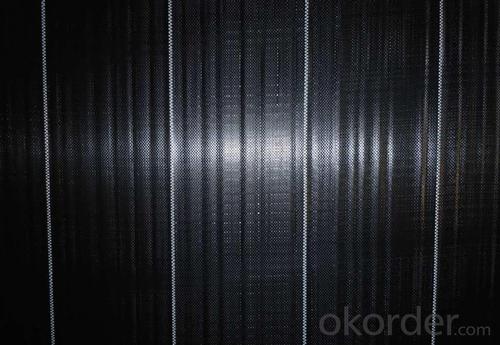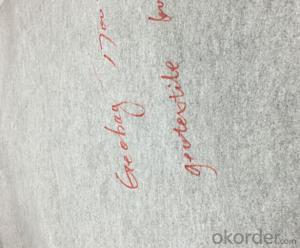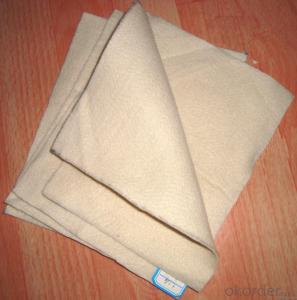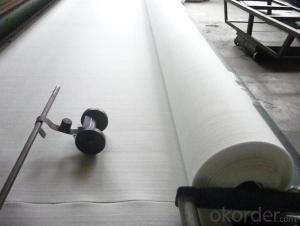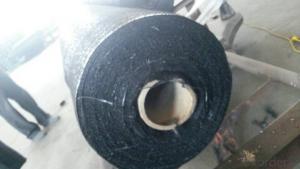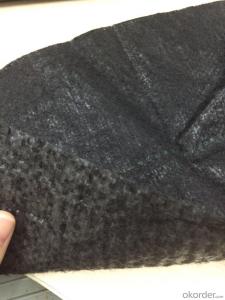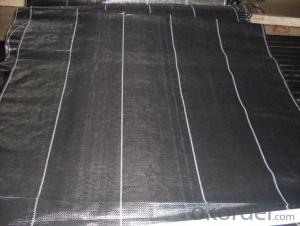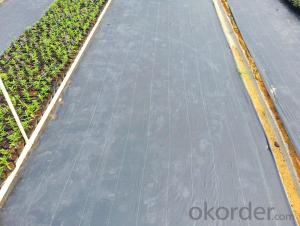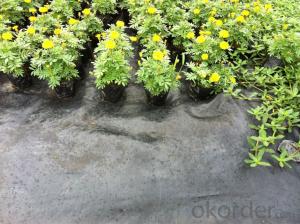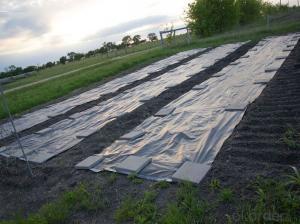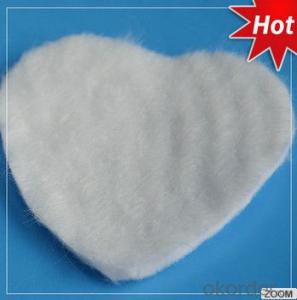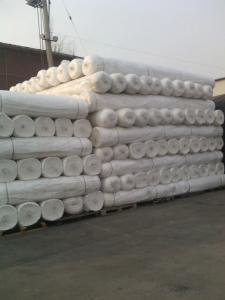Geotextile Pot Woven Silt Fence with Pocket Polypropylene Fabric
- Loading Port:
- China main port
- Payment Terms:
- TT OR LC
- Min Order Qty:
- 5000 roll
- Supply Capability:
- 10000 roll/month
OKorder Service Pledge
OKorder Financial Service
You Might Also Like
Woven Fabric Description:
1.Woven Fabric Description:
Made from PP(Polypropylene) or PE (Polyethylene) flit yarn on circle weave machine.
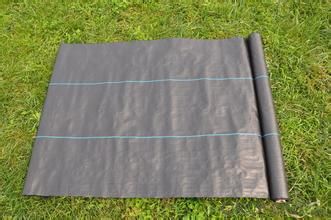
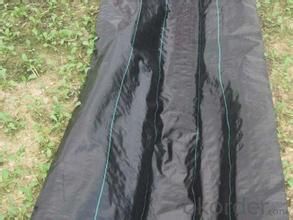
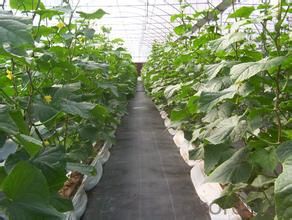
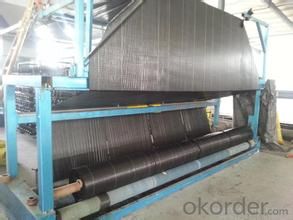
2.Wooven Geotextile Functions and Features:
1)Excellent weed control
2)Excellent UV resistance
3)Moisture,fertilizers,air reach plants to allow for healthy soil
4)Good water and air permeability
5)Exceptional toughness and strength
6)Durable,tear-resistant,anti-rot and anti-mildew
7)Light weight,easy to install,follows natural ground contours
8)Ideal for use in landscaped beds,under decks and walkways
9)Fashionable design,high quality,competitive price
10)Long service life
3. Woven Geotextile Property:
1) Light weight, high strength, low elongation, easy to construct.
2) Reinforcement, separation, drainage and filtration, fencing function, etc.
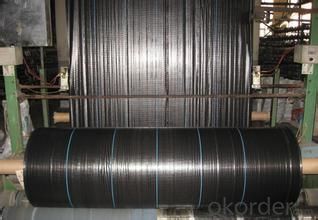
4. FAQ:
Q1: What is your minimum order quantity?
A:The minimum order quantity is 5000 ,but it is negotiable.
Q2:What is your payment terms?
A: T/T,Western Union,Paypal,L/C...
Q3:What is your delivery time?
A:Production time usually costs 2-20 days.
Waiting to cooperate with you!
- Q: What are the key considerations for geotextile installation in high-altitude regions?
- When installing geotextiles in high-altitude regions, there are several key considerations to keep in mind. Firstly, the extreme weather conditions typically found in high-altitude areas, such as low temperatures, strong winds, and heavy snowfall, can impact the installation process. Therefore, selecting geotextiles with high durability and resistance to these conditions is crucial. Secondly, proper site preparation becomes even more important in high-altitude regions. The ground should be thoroughly assessed for its stability and potential frost heaving. Adequate measures, such as ground stabilization techniques and proper drainage systems, should be employed to ensure the long-term effectiveness of the geotextile installation. Furthermore, the selection of suitable installation methods is crucial in these regions. The use of specialized equipment and techniques, such as anchoring systems or thermal bonding, may be necessary to counteract the harsh environmental conditions and ensure proper geotextile performance. Lastly, it is essential to consider the environmental impacts of the geotextile installation in high-altitude regions. This includes adhering to local regulations and best practices to minimize disturbance to sensitive ecosystems and wildlife habitats. Overall, key considerations for geotextile installation in high-altitude regions include selecting durable materials, conducting thorough site preparation, using suitable installation methods, and addressing environmental concerns.
- Q: How are geotextiles different from other geosynthetic materials?
- Geotextiles are a type of geosynthetic material that primarily functions as a permeable fabric used in various civil engineering applications. Unlike other geosynthetic materials such as geogrids or geomembranes, geotextiles are primarily designed to improve soil stability, filtration, drainage, and erosion control. They are typically made from synthetic fibers and have a textile-like structure, providing strength, flexibility, and high water permeability. While other geosynthetic materials may have different functions such as reinforcement or containment, geotextiles excel in their ability to separate, filter, and reinforce soil, making them unique in the realm of geosynthetics.
- Q: Can geotextiles be used in the protection of underground cables and pipes?
- Yes, geotextiles can be used in the protection of underground cables and pipes. Geotextiles act as a barrier between the cables/pipes and surrounding soil, preventing potential damage caused by abrasion, puncture, or chemical reactions. They help distribute loads and provide stability, improving the overall performance and lifespan of underground infrastructure.
- Q: Can geotexters cover grass seeds?
- Yes, a lot of lawns are covered, but with dozens of grams of geotextiles are used
- Q: Is it possible to isolate permeated geotextiles and impervious geotextiles?
- Geotextile is permeable, and water, but the soil, from the filter effect, impermeable geotextile is geomembrane composite geotextile composite products, is impermeable and waterproof, I am specializing in the production of geotechnical materials,
- Q: How do geotextiles improve the performance of geogrids?
- Geotextiles improve the performance of geogrids by providing additional reinforcement and stability. They act as a separation layer, preventing soil particles from migrating through the geogrids and reducing the potential for clogging. Geotextiles also enhance the drainage capacity of geogrids by allowing water to flow freely through the system, preventing the accumulation of water and reducing the risk of soil erosion. Moreover, geotextiles can increase the overall strength and load-bearing capacity of geogrids, making them more efficient in stabilizing soil and improving the overall performance of geogrid applications.
- Q: Why the durability of filament geotextile is relatively strong
- The reason for raw materials
- Q: How do geotextiles help with ground improvement?
- Geotextiles help with ground improvement by providing reinforcement, filtration, and separation functions. They enhance soil stability, prevent erosion, and improve drainage, ultimately enhancing the overall performance and durability of the ground.
- Q: Can geotextiles be used in underground drainage systems?
- Yes, geotextiles can be used in underground drainage systems. Geotextiles are often used as a filter and separator in these systems to prevent the migration of fine particles and to enhance the overall performance and longevity of the drainage system.
- Q: Permeable geotextile price how much
- 2 to 4 yuan range
Send your message to us
Geotextile Pot Woven Silt Fence with Pocket Polypropylene Fabric
- Loading Port:
- China main port
- Payment Terms:
- TT OR LC
- Min Order Qty:
- 5000 roll
- Supply Capability:
- 10000 roll/month
OKorder Service Pledge
OKorder Financial Service
Similar products
Hot products
Hot Searches
Related keywords
